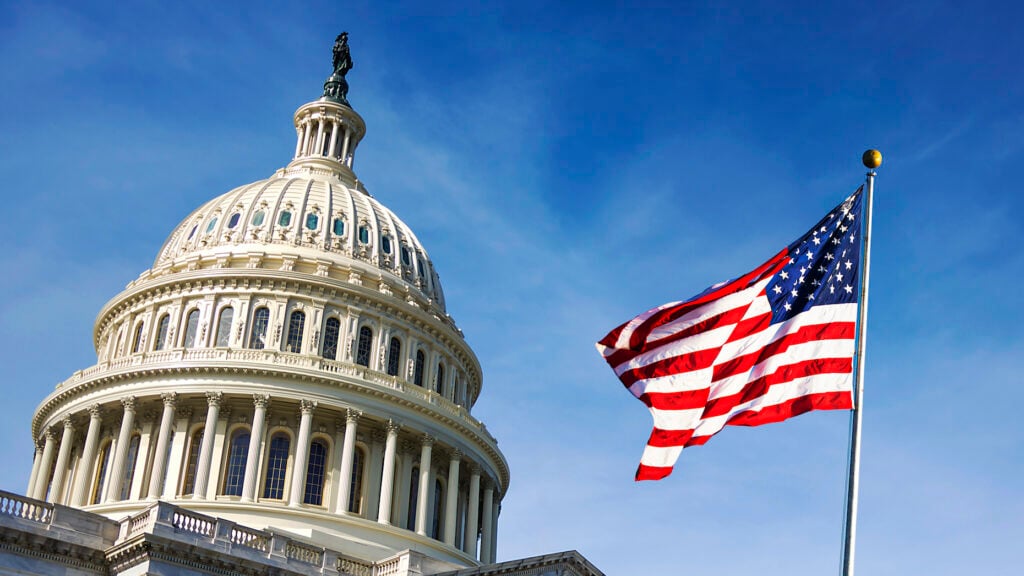In May, we’ll go deep on money and finance for a special theme month, by talking to leaders about where the mortgage market is heading and how technology and business strategies are evolving to suit the needs of buyers now. A prestigious new set of awards, called Best of Finance, debuts this month too, celebrating the leaders in this space. And sign up to Mortgage Brief for weekly updates all year long.
As it comes under scrutiny from lawmakers, Fannie Mae and Freddie Mac’s federal regulator is formally requesting public feedback on what its goals and policy priorities should be in overseeing what the mortgage giants charge for their services.
Fannie and Freddie don’t make loans themselves, but guarantee payments to investors who fund the majority of U.S. home loans. The guarantee fees that Fannie and Freddie charge lenders — costs that are passed on to borrowers — are intended to cover their administrative costs, expected credit losses and cost of capital.
The Federal Housing Finance Agency has been embroiled in controversy this year over changes to pricing matrices for calculating upfront guarantee fees, known as loan level price adjustments (LLPAs), for mortgages that are sold to Fannie and Freddie.
Fee increases targeting some homebuyers making moderate down payments that took effect May 1 generated a backlash from critics who questioned whether the adjustments were intended to subsidize fee waivers for first-time homebuyers of limited means.
Republicans have introduced four competing bills in the House of Representatives to cancel the fee increases announced by FHFA in January, with legislation introduced on April 27 by Arizona Republican Rep. Amy Biggs, HR 2928, attracting 41 cosponsors to date. A competing bill backed by Oklahoma Republican Rep. Stephanie Bice, HR 2876, has 27 cosponsors. Two newer bills, HR 2960 and HR 3041, have only six cosponsors between them so far.
Last week the FHFA said it’s backing down from plans to implement another upfront fee based on borrowers’ debt-to-income (DTI) ratios that was scheduled to be implemented Aug. 1. Lending industry groups like the Mortgage Bankers Association had called it “unworkable.”
In announcing a formal request for input Monday on Fannie and Freddie’s pricing framework, FHFA Director Sandra Thompson said the goal is to protect taxpayers against potential losses while supporting “affordable, sustainable housing and first-time homebuyers.”
The agency wants to hear whether it is appropriate to continue to link upfront guarantee fees to the mortgage giants’ capital requirements, which were established in 2020 and have “a significant impact on the risk-based pricing component” of Fannie and Freddie’s guarantee fees.
“We are committed to being transparent and to considering views from a diverse set of stakeholders and market participants,” Thompson said in asking interested parties to provide written input by Aug. 14.
But Republican lawmakers on Capitol Hill are determined to make more political hay out of recent changes to Fannie and Freddie’s fees, with the Housing and Insurance Subcommittee of the House Financial Services Committee hosting a hearing on the topic Wednesday.
Industry groups representing the real estate industry including the National Association of Realtors and the Housing Policy Council spoke at the hearing titled “The Current Mortgage Market: Undermining Housing Affordability with Politics.”
While the FHFA was not invited to testify at the hearing, NAR’s representative — Kenny Parcell, CEO of Equity Real Estate Utah — told lawmakers that many news reports “misconstrued” the changes implemented by the regulator.
“While it is true that buyers with lower credit scores and lower down payments received a price reduction — a reduction which NAR believes is necessary — these borrowers will continue to pay significantly more than borrowers with higher credit scores and higher down payments,” Parcell said in his written testimony. “This is appropriate and consistent with the principles of risk-based pricing.”
It’s also important to note that there were no changes to underwriting or borrowers’ qualifications, he noted.
“If you did not qualify for a loan before, you do not today,” Parcell said. “All loans must still comply with the laws established in the Dodd-Frank Act, including the Ability to Repay Rule.”
But Parcell said the best thing for FHFA to do would be to step away from setting pricing. Instead, it should set a maximum and minimum return on equity for the mortgage giants and let Fannie and Freddie determine pricing themselves.
This “collar” would prevent Fannie and Freddie from setting pricing too high on any segment, Parcell said, and the return could also be set high enough so they couldn’t undercharge “in order to grab more market share and undercapitalize.”
Much of FHFA’s authority to set Fannie and Freddie’s pricing dates to 2008, when the mortgage giants were placed in government conservatorship as their potential losses mounted in the wake of the subprime mortgage crisis. The Housing and Economic Recovery Act of 2008 required FHFA to conduct an ongoing study of fees charged by the mortgage giants and to submit an annual report to Congress on the results.
But there’s considerable debate over how much capital the mortgage giants would need to exit government conservatorship and how the companies would be structured. With income still flowing in from guarantee fees and mortgages performing well, the mortgage giants are profitable today and have boosted their combined net worth to just over $103 billion as of March 31.
Former Freddie Mac CEO Donald Layton has estimated that Fannie and Freddie could be considered recapitalized when their combined net worth hits $150 billion. But the actual amount needed would depend on how the mortgage giants might be structured when released from conservancy and how much of a backstop the government would provide.
Timeline of fee changes 2008-2023
- March 2008: Increases to ongoing fees and addition of two new upfront fees: A 25-basis point “adverse market fee” and a fee based on borrower’s loan-to-value ratio and credit score
- Late 2008-through 2011: Fannie and Freddie gradually raise fees and refine schedules for upfront fees
- December 2011: FHFA orders Fannie and Freddie to increase ongoing fee for all loans by 10 basis points to support payroll tax cut for through April 2022
- August 2012: Fannie and Freddie ordered to raise fees by an additional 10 basis points on average to better align with credit risk exposure
- April 2015: FHFA eliminates the 25-basis point adverse market fee, but orders targeted increases for specific loan groups — resulting in changes that are “revenue-neutral with little or no impact for most borrowers”
- September 2018 (and March 2019): Fannie and Freddie implement 25-basis point upfront free for loans on second homes where LTV exceeds 85 percent
- April 2020: Fannie and Freddie cleared to purchase loans that are in forbearance, with upfront fee of 500 basis points for first-time homebuyers and 700 basis points for others
- August 2020: Fannie and Freddie ordered to introduce 50-basis point upfront adverse market fee for cash-out and rate-term refinancing; HomeReady and Home Possible loans and loans of $125,000 or less are exempt
- July 2021: FHFA eliminates adverse market fee for refinancing effective Aug. 1
- November 2021: The Infrastructure Investment and Jobs Act extends until 2032 the 10-basis point fee supporting payroll tax cuts approved by Congress in 2011; Fannie and Freddie continue to collect this fee, which was scheduled to expire in 2022, and transfer the proceeds to the Treasury Department
- January 2022: FHFA orders Fannie and Freddie to increase upfront fees for second homes by 112.5 to 387.5 basis points and increase upfront fees for high balance, conforming jumbo loans by 25 to 75 basis points (depending on loan-to-value ratio)
- October 2022: Fannie and Freddie told to slash fees for many first-time homebuyers by eliminating upfront fees for eligible borrowers and affordable mortgage products while increasing fees for most cash-out refinancing by up to 100 basis points
- January 2023: FHFA announces changes to upfront fees recalibrating fees to new credit score and loan-to-value ratio categories; The National Association of Realtors objects that homebuyers with good credit scores seeking to buy houses with “moderate” down payments will pay higher fees
- May 2023: FHFA rescinds plan to roll out another new upfront fee based on borrowers’ debt-to-income ratio that had been scheduled to be implemented on Aug. 1, after lending industry groups call it unworkable.
Source: November 2022 FHFA report, “Fannie Mae and Freddie Mac Single-Family Guarantee Fees in 2021” and Inman coverage of FHFA pricing announcements
Get Inman’s Mortgage Brief Newsletter delivered right to your inbox. A weekly roundup of all the biggest news in the world of mortgages and closings delivered every Wednesday. Click here to subscribe.













